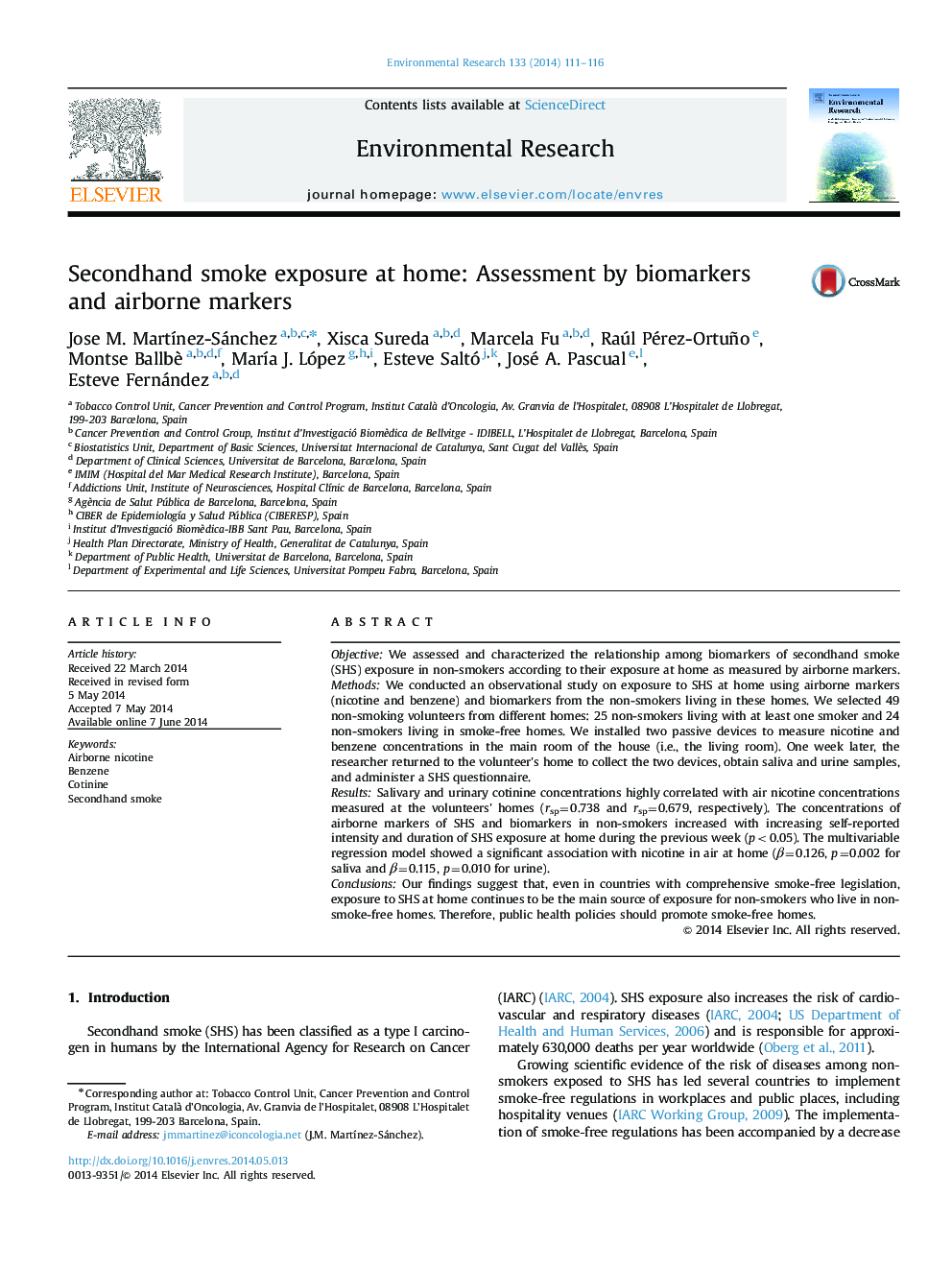| کد مقاله | کد نشریه | سال انتشار | مقاله انگلیسی | نسخه تمام متن |
|---|---|---|---|---|
| 4469728 | 1622568 | 2014 | 6 صفحه PDF | دانلود رایگان |
• There is a high correlation between the airborne nicotine at home and biomarkers.
• Airborne nicotine at home increased with the self-reported SHS exposure at home.
• Both biomarkers increased with air nicotine at home and self-reported SHS at home.
ObjectiveWe assessed and characterized the relationship among biomarkers of secondhand smoke (SHS) exposure in non-smokers according to their exposure at home as measured by airborne markers.MethodsWe conducted an observational study on exposure to SHS at home using airborne markers (nicotine and benzene) and biomarkers from the non-smokers living in these homes. We selected 49 non-smoking volunteers from different homes: 25 non-smokers living with at least one smoker and 24 non-smokers living in smoke-free homes. We installed two passive devices to measure nicotine and benzene concentrations in the main room of the house (i.e., the living room). One week later, the researcher returned to the volunteer׳s home to collect the two devices, obtain saliva and urine samples, and administer a SHS questionnaire.ResultsSalivary and urinary cotinine concentrations highly correlated with air nicotine concentrations measured at the volunteers׳ homes (rsp=0.738 and rsp=0.679, respectively). The concentrations of airborne markers of SHS and biomarkers in non-smokers increased with increasing self-reported intensity and duration of SHS exposure at home during the previous week (p<0.05). The multivariable regression model showed a significant association with nicotine in air at home (β=0.126, p=0.002 for saliva and β=0.115, p=0.010 for urine).ConclusionsOur findings suggest that, even in countries with comprehensive smoke-free legislation, exposure to SHS at home continues to be the main source of exposure for non-smokers who live in non-smoke-free homes. Therefore, public health policies should promote smoke-free homes.
Journal: Environmental Research - Volume 133, August 2014, Pages 111–116
